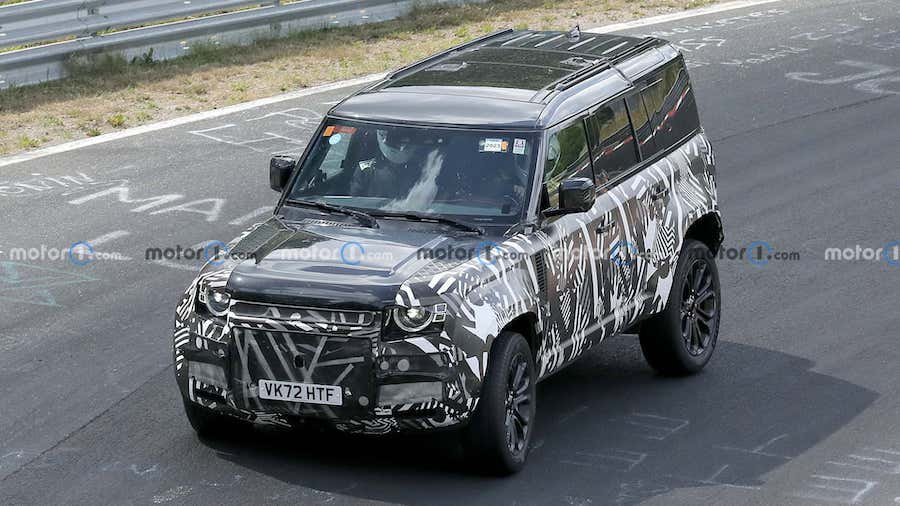2025 Land Rover Defender SVX Spied Doing Hot Laps, Could Feature BMW 4.4L V8 Engine

But more importantly for us car nuts, the aging 5.0-liter V8 of Jaguar origin is going the way of the dodo for a smaller engine from German automaker BMW.
This isn't the first internal combustion-related collaboration between Land Rover and Munich's favorite son, though. BMW supplied the M51 inline-six turbo diesel of the second-gen Range Rover, as well as the M57 inline-six turbo diesel and M62 vee-eight lump of the third-gen Range Rover. In hindsight, the original collab isn't exactly a shocker because Land Rover was owned by BMW between 1994 and 2000.
Now part of Jaguar Land Rover, the British marque started using BMW engines again with the fifth-generation Range Rover and third-generation Range Rover Sport. Both of them use the German brand's 4.4-liter V8, a twin-turbocharged unit with up to 626 horsepower and 553 pound-feet (750 Nm) in the 2024 model year Range Rover Sport SV. Codenamed S68, the force-fed lump is expected to carry over to the Defender SVX, due in 2024 for the 2025 model year.
Spied time and time again making turbo noises rather than supercharger noises, the Defender SVX has been spied once again. This time around, at the Nurburgring, doing hot laps on the world's most challenging racetrack. The body roll is quite noticeable in the featured pictures, although it could've been worse. With that kind of ground clearance and center of gravity, it's remarkable the body roll is so subdued.
You'll further notice mismatched wheels and tires, namely street-going wheels and Michelins at every corner versus an off-road wheel and tire on the tailgate. The spare reads BFGoodrich Trail-Terrain T/A, which is an all-terrain tire designed to resist tearing and chipping on gravel. Its serrated shoulder is designed for soft soil, and the Ohio-based manufacturer further throws in a 60,000m (100,000km) mileage warranty.
Zooming in on the Defender SVX also reveals pumped-out fender flares, huge mud flaps up front and in the rear, quad exhaust pipes, and a slightly more off-roady front bumper. A sunroof is also present, whereas the rear end of the prototype's roof doesn't have one.
Even though it's the most off-road-oriented Defender of the modern era, don't be fooled into putting the SVX in the same category as the portal-axled G 63 4x4 Squared. It's also quite hard to compare the unibody Defender SVX with the body-on-frame Jeep Wrangler 392 Rubicon Xtreme Recon and Ford Bronco Raptor.
Many Land Rover enthusiasts lament about the Defender going soft with this generation, but they're only half right. JLR wouldn't have made this switch had there not been sufficient demand for a unibody Defender, and the order books clearly show immense demand for the Defender. Had we been given a choice between a unibody and no Defender at all, chances are most of us would have picked the lesser of two evils.
Related News
